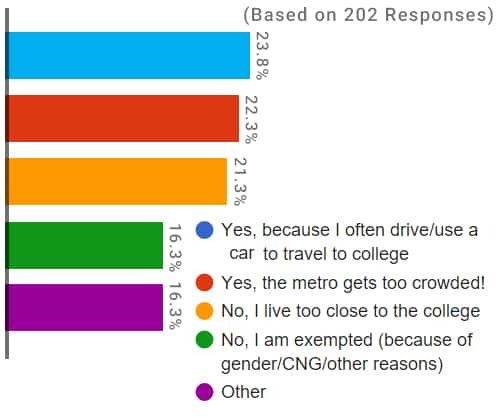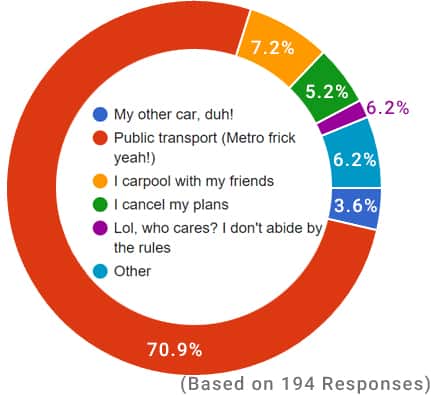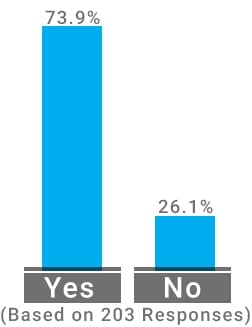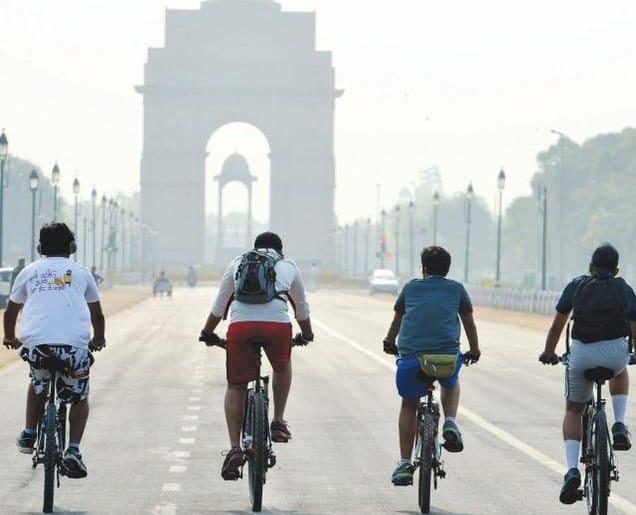Delhi University evens out the odd strategy: Online poll conducted by DU Beat shows most students in favour of the Delhi Government’s odd- even car policy with suggestions how to tackle pollution more effectively.
We asked students of University of Delhi 6 questions in an online survey to adjudge their assessment of the much debated pollution control strategy implemented by the Delhi Government from 1- 15 January ’16 as a test run. While the policy itself has faced quite a lot of criticism for being inconvenient and ineffective, DU students voted in favour of it as one of the means to achieve a cleaner future. Here’s a closer look at the answers:
1. Has the Odd Even formula affected you?
– About 50% of the respondents said that the odd- even formula did affect them- either because they own and travel by a car or because the metro gets more crowded than usual.
– The other half, about 40%, said that no, they were either exempted under the policy or lived too close to college to be affected by the policy.
– The reasons given by respondents who selected “other” ranged from being able to enjoy clean air and decongested roads to being happy about the increase in frequency of DTC buses to saying that they used the metro like before, but noticed no change in amount of crowd.
2. Do you think the Odd-Even strategy is working?
– Despite only about a half of the total survey takers said they were affected by the policy, over 70% believed it to be working as planned.
– Close to 18% said it was causing them great inconvenience and didn’t seem to be making any difference, while the rest said that they haven’t noticed any real change.
3. What alternative mode of transportation do you use when not a car?
– An overwhelming 77% of the respondents said they relied on public transport- Metro, buses, autos.
– Other respondents said they either used their other car or scooty, or carpooled, or got a cab.
– 5% said they’d rather cancel their plans and stay in, and 3 respondents confessed to flouting the rule.
4. What changes do you think can be introduced to the strategy to make it more effective/less inconvenient?
– The most common answer was the introduction of a more efficient public transport system. Some suggestions that stood out: 1. Increase number and frequency of metro and buses, 2. Regulate tariffs charged by autos/ rickshaws, 3. Ensure better last mile connectivity.
– Another change that people felt was needed was the lack of qualified traffic police force and stricter vehicular pollution check measures and penalties.
– The point of removing exemptions on 2- wheelers and female drivers was made while emphasising the need for implementation of stricter security measures to ensure their safety in public transport.
– Observing regular car- free days even after the 15 days are over seems like a popular option.
– Some respondents felt that it wasn’t the strategy that needed alteration but that the authorities needed to control pollution from factories and trucks.
5. According to you, what else can be done to reduce pollution levels in Delhi, especially by students/your peers?
– Most respondents recommended the adoption of alternate modes of transport- From using carpooling as a way to get to know your neighbours better, to cycling to stay fit.
– A conscious effort and an open mind is what the youth needs to help fix Delhi’s air, the respondents said. Suggestions regarding tree planting and cleanliness drives came up often.
6. Would you support the Odd Even strategy if it were to be extended beyond 15th January?
With about only a quarter saying they wouldn’t want the strategy to extend beyond the 15 days, Delhi University students gave a clear thumbs up to the scheme that has given mixed results over other parts of the world.
Through debate and discussion, the fact that Delhi’s off the chart pollution levels are contributed to by more than a few factors is common knowledge. While banning cars is just one way to go about it, there is scope for a lot more, both, by the authorities and by the individuals. The online survey conducted by DU Beat has presented us with very optimistic results regarding the youth’s understanding of the gravity of the situation and their resolve to make a difference.
Vani Vivek
Graphics by Aditya Rathore for DU Beat






